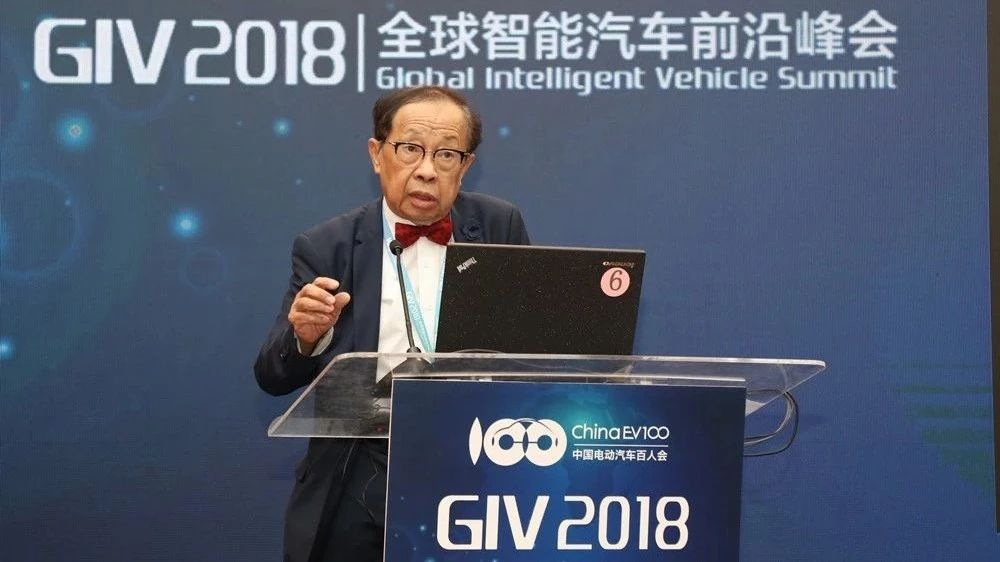On June 21, the day after the Global Intelligent Automotive Frontiers Summit held by the China Electric Vehicle 100-People Association, Academician Chen Qingquan of the Chinese Academy of Engineering attended the summit, and the following are the core points of his interview and speech.
The following content is compiled by Garage 42.
Talking About the Transformation of the Automotive Industry
The automotive revolution has arrived. How do we complete the automotive revolution?
It must be a collaboration between two major industries, one being the automotive industry and the other being the IT industry. The automotive industry has a history of over 100 years, its body is very strong, but unfortunately its brain has declined a bit. Without impact, its progress is too slow, hence the IT industry has come in.
The IT industry is very sensitive to the market and is familiar with the Internet, but unfortunately, the IT industry’s body is not strong enough because making a car is not as simple as making a mobile phone. There are thousands of components in a car, and the certification process is very strict because it involves people’s lives. The threshold is not as simple as making a mobile phone, and there are technological thresholds, capital thresholds, and production volumes. Therefore, the IT industry must have a sense of awe when working with the older brother in the automotive industry so that the two industries can work together to complete this revolution.
The automotive industry requires intensive capital, talent, and technology, so it is necessary to adopt a welcoming attitude to all emerging forces, and to have an attitude of openness, inclusiveness, and encouragement to stimulate traditional forces.
The essence of the automotive revolution is three-fold: electrification, autonomous driving, and interconnectivity and sharing. I believe that these three contents must be integrated with each other to achieve maximum effectiveness, because electrification provides only a foundation. With electrification, it provides a better foundation for unmanned driving. Furthermore, unmanned driving cannot ignore sharing, so only when these three elements are working together, can the maximum benefits be achieved for society.
Talking About Government Regulation and Corporate Development
It is not enough to only focus on technology when it comes to transportation; government policies must also be considered.
Recently, I established an Academician Science and Technology Innovation Center in Beijing, and in addition to Beijing, there are also centers in Hainan, Dalian, and abroad, in Germany, Turkey, and South Korea.
Why did I set up this center? In the innovation process, there are barriers and obstacles between scientific laboratory research, from technology to product, from product to the market. Where do these barriers come from? They come from differences in perspectives between different experts, officials, and entrepreneurs. Therefore, a platform is needed for everyone to exchange, debate, and evaluate.
Another barrier comes from different interest chains and different industrial chains, which make it difficult to achieve due to conflicting interests. Therefore, I propose a concept through this platform, which is cross-border integration, driven by innovation, a technology powerhouse, and then the “Belt and Road Initiative”.The meaning of cross-domain integration must involve the intersection of multiple disciplines. In fact, intelligent automobiles are exactly like this, cross-referencing multiple disciplines and technologies, different industrial and commercial models, multi-layered and three-dimensional systems, domestically and internationally from the county level, district level to the central level. We hope to achieve three functions: the role of think-tanks, accelerators, and incubators.
For technology to succeed, it must be integrated with the other four major elements such as policies. Once we have technology, we need policies, and with policies, we must understand the market and finance, and then promote it with culture.
Discussing the Development of Electric Cars and the Transformation of the Entire Energy Structure
How can China’s electric cars and new energy cars develop in a healthy way? I believe we need to accomplish one, two, three, and four.
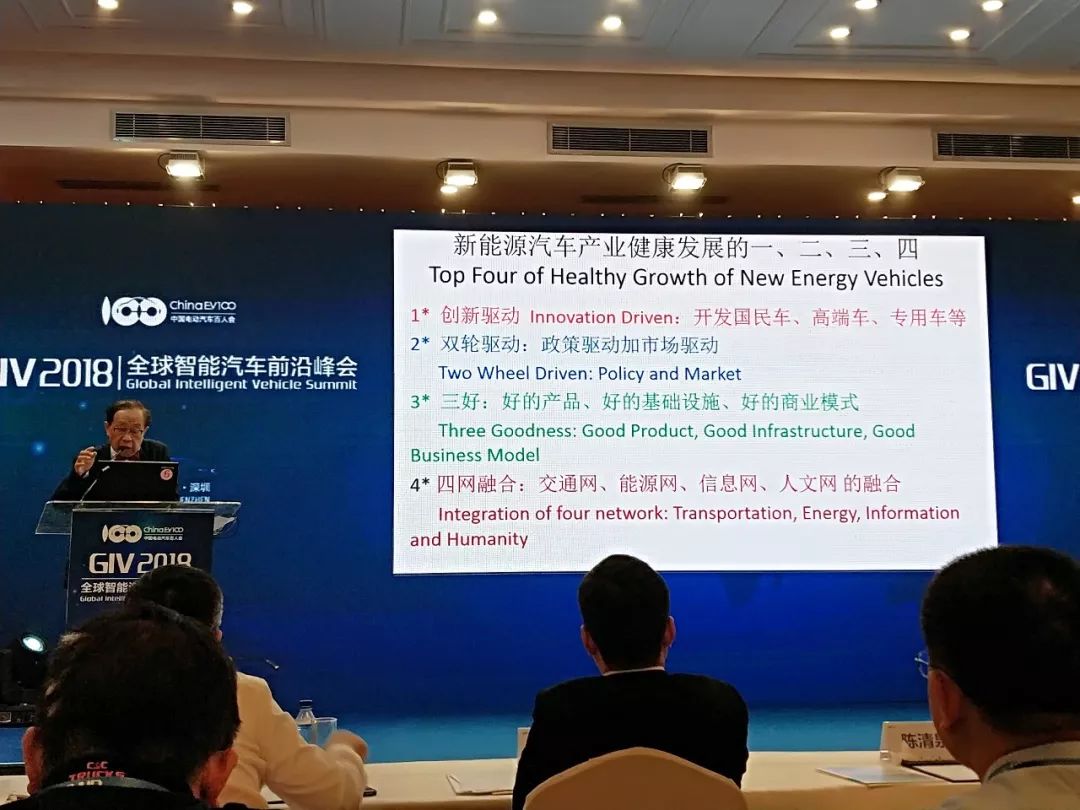
-
First, innovation-driven, developing national cars, high-end cars, and specialized cars, etc.
-
Second, dual-wheel drive, policy-driven and market-driven.
-
Third, good products, good infrastructure, and good business models.
-
Fourth, the integration of transportation, energy, information, and humanities networks.
Electric cars are not just simple transportation. Electric cars are carriers of energy and information. Because electric cars use electricity, which is a secondary energy source, they can be combined with various primary energy sources, such as solar and wind energy, to optimize and configure energy through the battery in the car. Therefore, it is essential to fully utilize electric cars as a carrier to transform the energy system.
My recent research is to combine energy with information, opening up energy computers and energy banks. I have developed a demonstration of an energy operating system at the Beijing Low-Carbon Research Institute, just like computers, to optimize and configure various energy sources, with a storage system and operating system.
What problem am I trying to solve? I want to solve the contradictions in energy utilization by integrating the flow of energy, matter, and information.
I will give you a few simple examples. In our country, traditional energy sources and new energy sources have conflicts because of their physical characteristics.
Traditional energy sources have large quantities and burn coal and oil with large machines; new energy sources (wind and solar power) are intermittent, unstable in quantity, and difficult to control. The efficiency of power plants is not high, but we can use energy computers to optimize them. Currently, our country has the largest solar and wind power, but we also need to (be forced to) abandon them. By using hydrogen storage, which is a flow of substance, the flow of energy is converted into a flow of substance and saved, and when we need it tomorrow, the hydrogen can be combined with oxygen.The message I want to convey here is that although we are developing new energy vehicles, it is necessary to integrate them into the entire energy structure transformation. New energy vehicles should also be closely linked to intelligent driving, intelligent vehicles, smart cities, and smart energy to achieve their maximum potential. This is the message I want to convey.
We are currently developing intelligent vehicles, and they can achieve greater benefits when linked with intelligence.
On Automated Driving Cars
Automated driving can bring significant economic benefits, and the United States, Japan, and Europe have identified intelligent vehicles as a hot spot of development. Smart vehicles have high-tech and cross-border integrated features, which can bring considerable social and economic benefits. Therefore, the United States, Japan, and Europe, all regarded as automobile strong countries, have identified them as a major direction of development. They are closely integrated with environmental systems, and artificial intelligence, big data, and cloud computing are essential for support.
The technological safety, science and technology, and development of unmanned driving vehicles based on automated driving technology may become the most significant technological innovation in the popularization of automobiles for over a century. Therefore, these are all worth our attention.
The National Development and Reform Commission regards intelligent vehicles as a significant opportunity for China’s automobile development. It is of great importance, relevance, and impact. The national strategy for intelligent vehicle innovation and development is to concentrate on superior resources, focus on core technology, introduce laws and regulations, formulate industry standards, and establish supporting facilities.
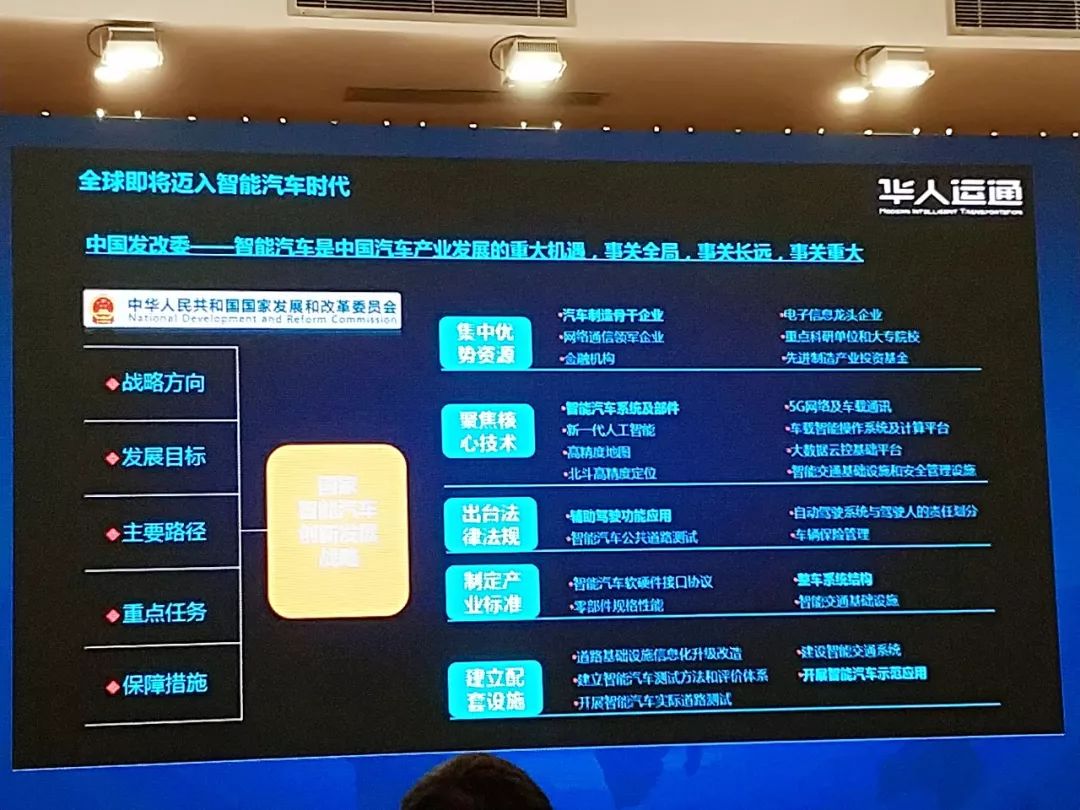
Automated driving will bring significant new industry chains. While Tier 1 develops sensing technology, identification and technical integration, and target fusion judgment, decision-making, vehicle dynamic control, and execution, powerful automakers will often develop them independently or in cooperation.
When I observed this industry in 2014, I emphasized the development of various excellent devices and let the OEM integrate them. However, another smaller and more creative company (Swiss start-up company OSR Enterprises AG) emphasized centralized control. It paid particular attention to the power control, energy control, and smart transportation of the entire car on one platform, believing that this is more effective. However, because all data needs to be shared publicly, progress has been slow, and data sharing may pose risks in the future.
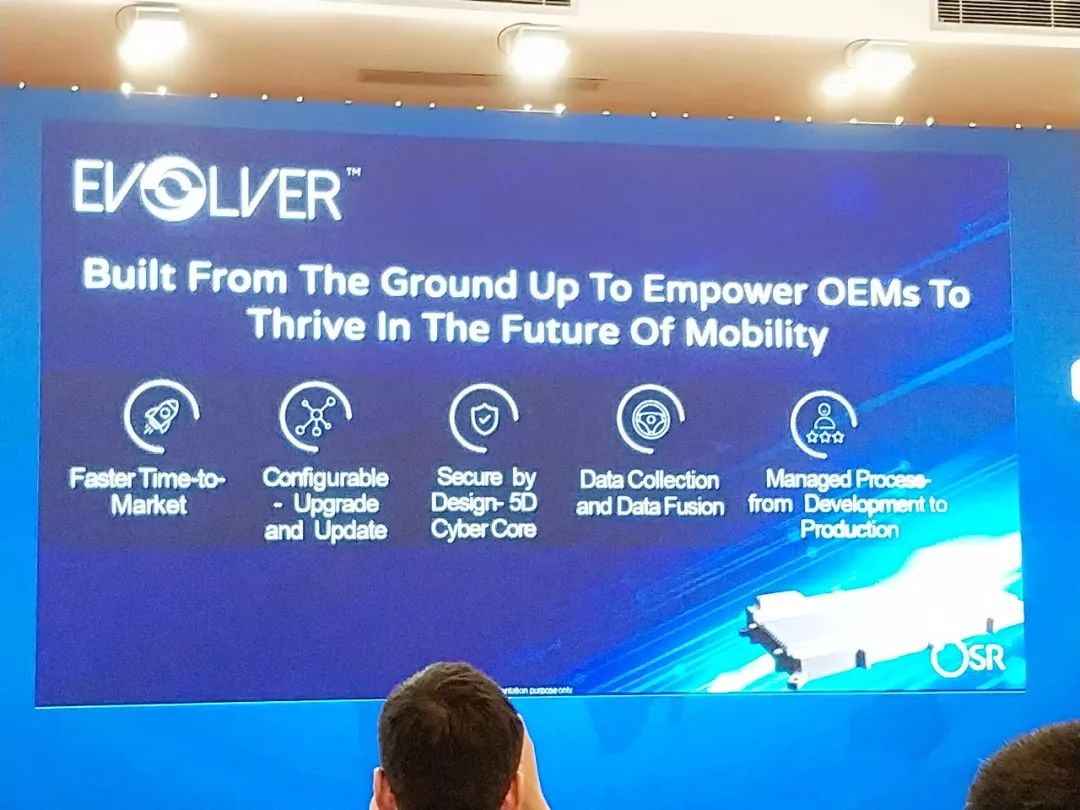
What do OEMs, Tier 1, and Tier 2 do in these industry chains? This is something that needs to be discussed. This is technology.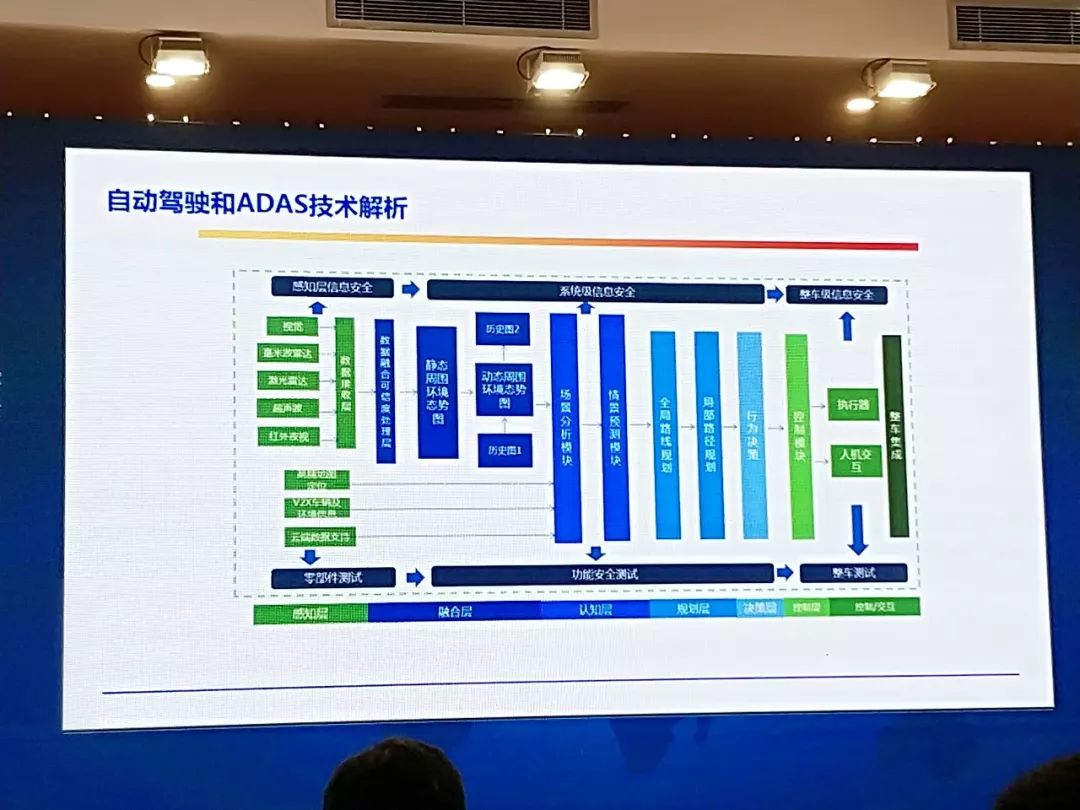
Where does the urgency of autonomous driving technology lie? It includes information security at the top-level perception layer, system-level information security, vehicle-level system security, testing of components, functional safety testing, vehicle testing, among many others technologies involving perception, fusion, cognition, planning, decision-making, control, and interaction.
These include technologies such as millimeter wave radar, lidar, ultrasonic wave, infrared, and data reception and fusion, as well as static surrounding situational maps, historical and dynamic surrounding situational maps, global and local route planning, behavior decision-making, control modules, and the many technologies involved in the execution layer.
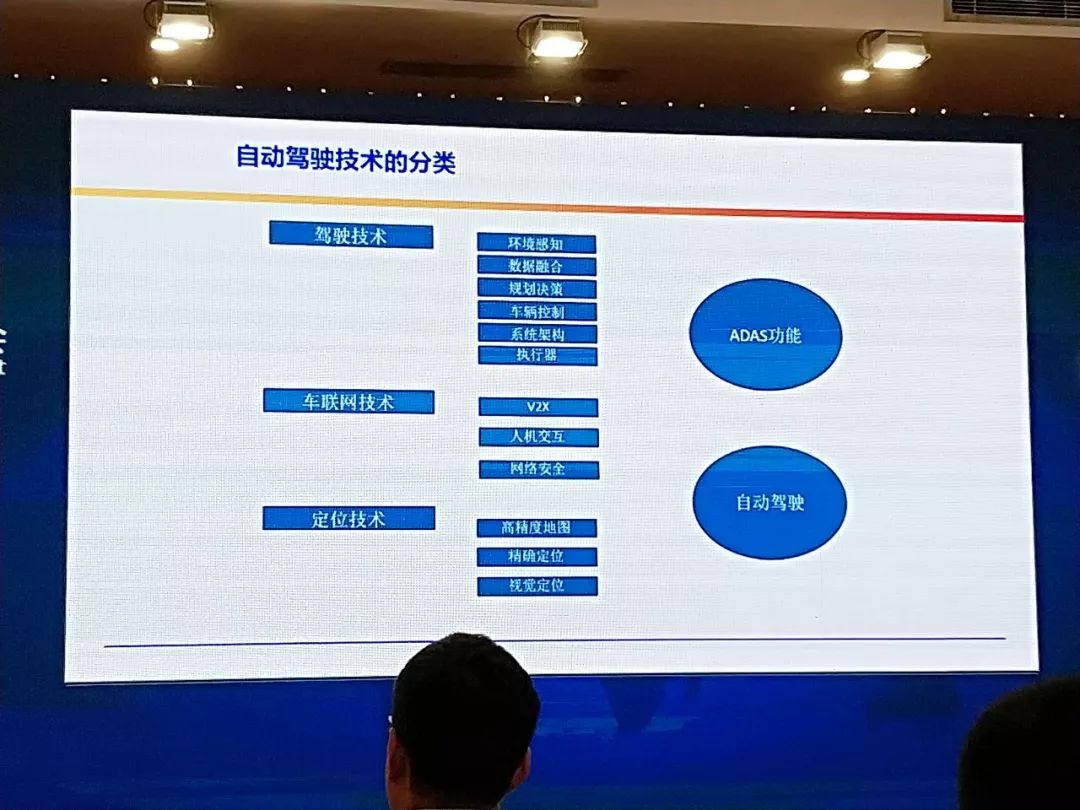
If classified, foreign driving technologies include environment perception, data fusion, planning and decision-making, vehicle control, system architecture, and actuators. The second category is vehicular networking technology, which includes V2X, human-machine interaction, and network security. The third is positioning technology, including high-precision maps, precise positioning, and persistent positioning.
If key technologies are to be broken down, they consist of sensing, target results fusion, decision-making and control, and dynamic control.
Words of Encouragement for Practitioners
Only by integrating the three revolutions can the greatest benefits be brought to society. Smart cars can address energy, environmental, safety, and congestion issues.
You need to rethink things. With the advent of a new industry, it will greatly impact the automotive landscape and the three ecosystems. Everyone needs to take a position, stand firm, and do their best. However, the most crucial factor is having core technologies and leading talents.
A lot of foreign leading talents have been hired now, and I set standards for them: First, study abroad. Second, work abroad. More importantly, the third thing is whether you have won victories abroad? Have you ever won battles abroad? Don’t come back if you have lost a battle abroad; this is the most important thing. If you have won a victory abroad, you will undoubtedly have experience and know your opponent.
The big revolution is coming. General Secretary Xi pointed out that with the arrival of this revolution comes historic opportunities; you can resonate with it, or you can miss it entirely. If your technical route is wrong, and you don’t have leading talents, you will regret it too late to do anything. The tide is coming, and you will be blown away by the tide. Now is the era of revolution, so you need to position yourself correctly.
To succeed, there must be six visions.The first thing is to emancipate the mind, especially during the revolution. How does the revolution solve ideology? First, focus on forward-looking issues to liberate the mind.
Second, focus on lessons learned from history.
Third, consider social and national needs.
Fourth, keep a down-to-earth attitude.
Fifth, look to Europe and America. Throughout the course of human history, advanced technology and talented professionals have always been in the West. Now, it is gradually returning to China, so we need to learn from Europe, the United States, Japan, and South Korea.
Sixth, inspiration. Passion is necessary for creativity and innovation, but integration is also crucial, especially with intelligent cars. It requires reshuffling and reorganizing to achieve integration. However, money is also needed. Today, there may be venture capitalists here, but for young friends, investing your youth into your career is the biggest investment. Thank you.
Note: Chen Qingquan is an expert in electric motor and electric vehicle drive. He is an academician of the Chinese Academy of Engineering, the Hong Kong Academy of Engineering Sciences, the Royal Academy of Engineering, the National Academy of Engineering of Ukraine, and Churchill College, Cambridge, UK. He has served as a senior consultant at Honda, Samsung, Ford, and other automakers, and he has been the president of the World Electric Vehicle Association and the Asia Pacific Electric Vehicle Association.
Chen Qingquan invented various special electric motors and control devices for electric vehicles, and developed many different types of electric vehicles. His research and innovation achievements have won many international awards and have been used in China, Japan, the United States, and Germany. He founded the World Electric Vehicle Association and is known as one of the “three sages of electric vehicles” and the “father of Asian electric vehicles.”
#
What will happen when electric vehicles meet artificial intelligence? An unprecedented cross-border mobilization of ideas and a media joint interview that lets us enter the future and embrace the surge of the electrification, intelligence, networking, and sharing of the travel industry!
The in-depth dialogue column “Future Travel Talk” interviews opinion leaders in the travel industry, explores industry practice experiences, and explores strategic insights. The China Electric Vehicles Hundred People Association joined hands with cross-border media matrix—Garage 42, 21st Century Business Herald, China Automotive News, Automotive Business Review, Tencent Auto, NetEase Auto, Sohu Auto, Global Auto, Automotive Industry News, 36 Kr, Titanium Media, EO Intelligence, New Smart Driving, EV Century, Bangning Studio, Youku Auto, and Penguin Number to jointly produce this program.
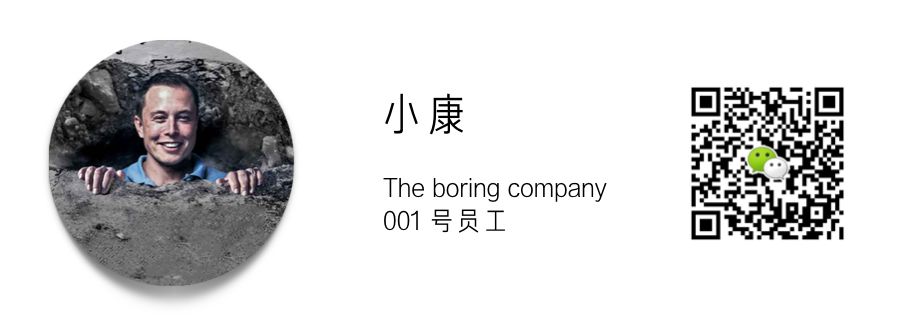


This article is a translation by ChatGPT of a Chinese report from 42HOW. If you have any questions about it, please email bd@42how.com.
